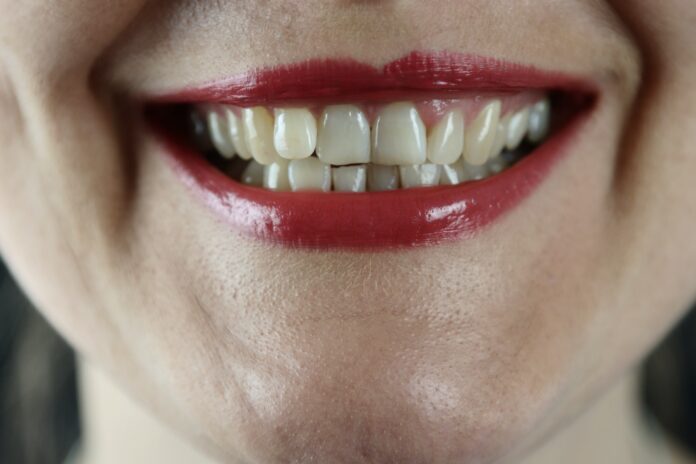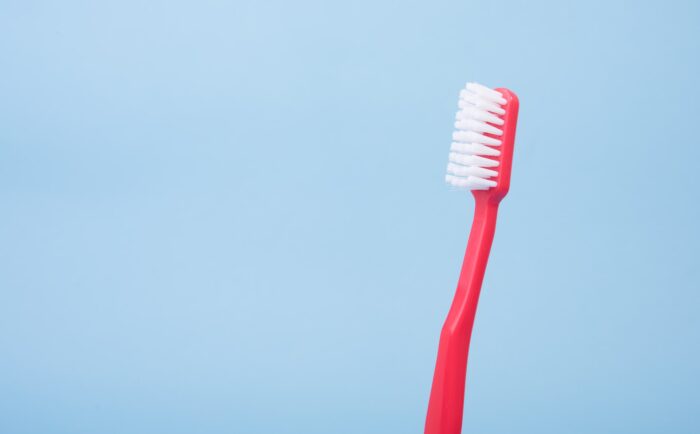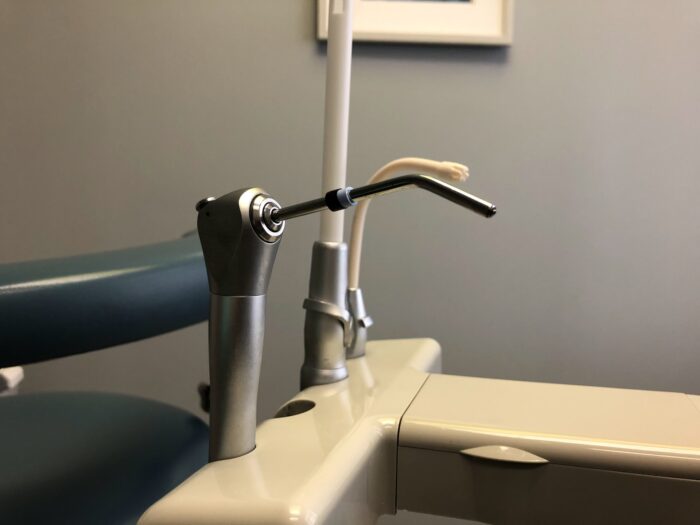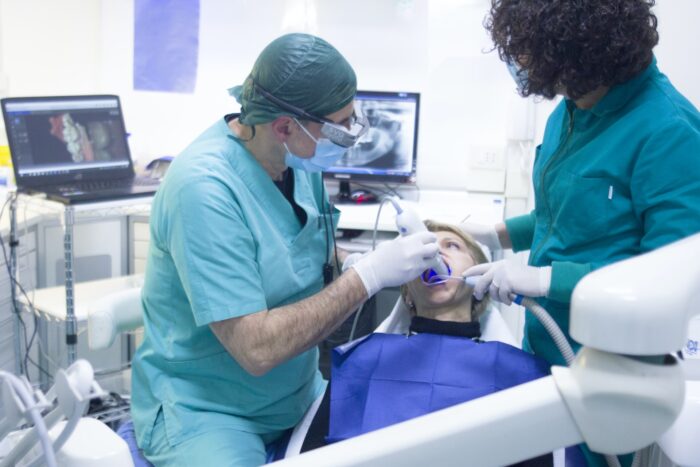
Sometimes gums can bleed during brushing or flossing, but many people ignore this because they consider it is normal. This tends to happen if you are flossing for the first time; however, it could also be another symptom of an underlying health problem – especially if it doesn’t go away after a week or two (with some sort of treatment).
What Causes Bleeding Gums?
Plaque build-up on the teeth, just along the gum line, leads to inflammation of the gums, known as gingivitis (gingiva is Latin for gums). If this plaque is not removed, preferably at a dentist’s office, it can progress into tartar, and eventually into periodontitis. This is an inflammation and later an infection as well, of the ligaments and bones of the root of the teeth. At this stage, teeth might become loose, and tooth loss can occur.
Also, bleeding can result from either brushing or flossing too vigorously, blood disorders, inflammation, injury, anticoagulation therapy (blood thinners), aspirin, and sometimes even during pregnancy because of hormone-induced changes. Inflammation manifests with redness, swelling, and softness of the gums which are a visible sign of a potential issue, as well as subjective pain.
Periodontal diseases, like gingivitis and periodontitis, typically are the result of accumulated plaque between the teeth and the gums. This condition can run in the family, meaning that some people are genetically more susceptible. This plaque contains food, saliva, and bacteria, and can be prevented by regular flossing and the use of mouthwash. This is why bleeding gums are closely linked to poor oral hygiene.
If an anticoagulation drug is the cause of it, then the transfusion medicine specialist who prescribed it in the first place must be consulted, as it may mean that the dose is too high for that patient. Also, vitamin K is linked with blood coagulation, so a deficiency might also lead to gum leads. These two causes can be asses by appropriate lab tests.
A tooth infection can lead to bleeding at that particular spot, but most likely, it would be accompanied by pain or sensitivity in the tooth.
How to Stop Bleeding Gums
Here are tips to stop your gums from bleeding given by www.parramattadentalavenue.com.au dentists.
First Aid
It can be stopped by pressing a clean and wet gauze against the bleeding gum. It should be held there for a few minutes.
Alternatively, since the cold makes the blood vessels narrow down and with that, reduce the bleeding, using an ice pack, or holding cold water in your mouth can halt the hemorrhage. Hold the ice pack against the affected area for at least a couple of minutes and then remove it. The cold temperature is also useful in soothing minor injuries and alleviating the swelling and pain caused by gingivitis.
People underlying health conditions may bleed for extended periods. If the bleeding persists over 10 minutes, seek medical help.
Use Mouthwash or Hydrogen Peroxide
Mouthwash kills the bacteria and reduces inflammation, which soothes bleeding and swollen gums. It can be used in both treatment and prevention. Another option is using 3% hydrogen peroxide after brushing. It is a disinfectant and the bubbles that are released will dislodge tiny pieces of remaining food. However, you should not swallow it or use it too often.
Rinse with Salt Water
Rinsing the mouth with warm saltwater kills the bacteria and fastens healing. Mix half a teaspoon of salt in one cup of warm water. Once the oral rinse is ready, gurgle it several times a day until the pain subsides.
Eat Foods Rich in Vitamin C
Eating foods rich in vitamin C boosts your immunity and lowers the risk of bleeding gums. Scurvy is the name of a severe deficiency in vitamin C which today is very rare in the developed world, and it causes gum bleeding, even if you maintain high oral hygiene standards. Some foods that contain this vital vitamin are carrots, oranges, red peppers, and sweet potatoes.
If for any reason you don’t consume foods rich in vitamin C, consider using supplements as a substitute. Since it is an antioxidant, vitamin C strengthens connective tissue and protects your gum’s lining. The FDA recommended daily intake for adults is 75-90 milligrams.
Reduce Carb Intake

Studies indicate that reducing carbohydrate consumption can improve gum health. Carbs and other sugary foods promote the growth of bacteria and the accumulation of plaque. While proper oral hygiene can reduce this build-up, lowering your carb intake prevents plaque formation. If you can’t seem to stay away from carbs, consider brushing your teeth three times per day – basically, after every meal. Just don’t do it immediately after eating highly acidic food as that may damage them.
Drink Green Tea
The green tea is loaded with antioxidants, among which are the catechins – a type of flavonoids that lower the inflammation occurring when bacteria infect your gums.
Use the Right Toothbrush

Since gum bleeds are a sign of sensitive or irritated gums, it is advisable to use extra-soft toothbrushes, as standard options (medium) can be too rough and might induce bleeding. Additionally, it is essential to replace toothbrushes every three months or when the bristles appear frayed.
Be gentle
Don’t be too aggressive with brushing as that may irritate the gums and damage the outer layer of the teeth. Try holding the brush at the very end and stay focused for those two minutes while brushing. Be intentional with the strokes and don’t push too hard as the brush might slip and poke the already sensitive gingiva.
Floss regularly
Once you get the hang of it and get used to having perfectly clean teeth, you will be inclined to floss every day. It is recommended that you do it once a day. The best time is at night, right before brushing your teeth. It will remove the plaque build-up if there is any, as well as the leftover food particles that get stuck between your teeth. The important thing to remember is to slide the floss along the sides of the tooth and make an arch at the top. There is no need to go too high up, gliding it into your gums since that may cut or squish them. Use a new section of the floss for every following move.
Quit Smoking
Not only that smoking increases the risk of oral cancer, but it also weakens your immunity, making the organism more vulnerable against the bacteria that cause gum disease. Quitting can significantly improve your oral, as well as your overall health.
See your dentist
You should visit your dentist for regular check-ups every 6 months. Then, they can evaluate the condition of your teeth, and intervene if necessary.
Conclusion
When you start flossing, you might experience bleeding because your gums are not familiar with the stimulation and you might be a little too harsh on them. However, this should stop if you floss regularly and learn some useful techniques.
Use the tips mentioned above to stop and prevent gum bleeding. If it severe or it persists, consult your dentist on how to stop the blood flow. If you are experiencing other unexplainable symptoms along with it, visit your medical doctor.










